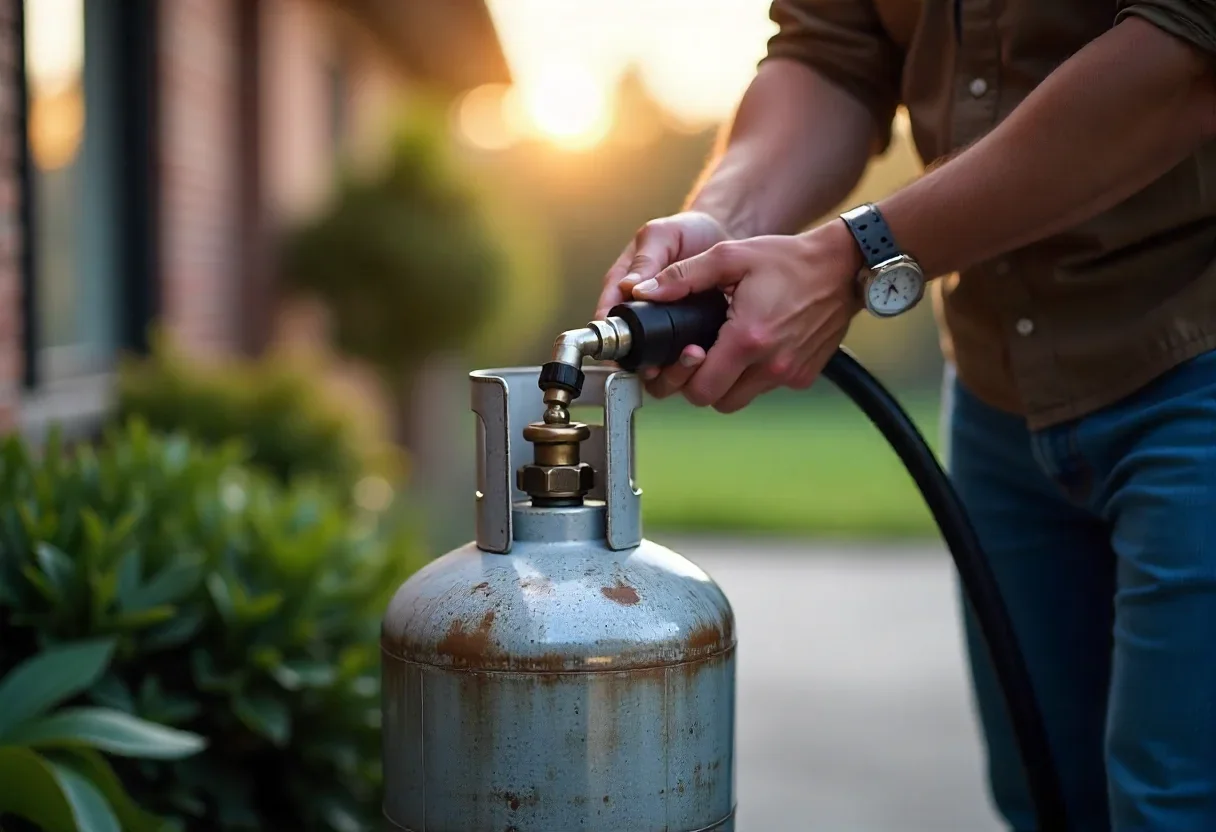How to Refill Your Gas Bottle | Step-by-Step Instructions
If you rely on gas bottles for your home, barbecue, or camping trips, knowing how to refill your gas bottle correctly is essential for both safety and efficiency. In this guide, we’ll walk you through the process of refilling your gas bottle step by step, providing essential safety tips, and answering frequently asked questions to ensure a smooth and hassle-free experience.
Why Refilling Your Gas Bottle Is Important
Refilling your gas bottle is a cost-effective and eco-friendly way to ensure that you always have access to gas when you need it. Instead of buying a new bottle each time, you can simply refill your existing bottle, saving money and reducing waste. Plus, refilling your gas bottle is a straightforward process if done correctly.
Materials You Will Need
Before you begin, make sure you have the following materials:
Gas bottle (of the correct size and type for your needs)
Gas refill station or service provider
Protective gloves (optional but recommended)
Wrench (for disconnection, if needed)
Spanner or adjustable tool (for tightening the valve)
Weighing scale (optional, but helpful for checking gas levels)
Step-by-Step Instructions on How to Refill Your Gas Bottle
Step 1: Check the Gas Bottle for Damage
Before you proceed with any gas bottle refilling, it’s crucial to check the bottle for any signs of damage, wear, or corrosion. Ensure that the valve is intact, and there are no cracks or leaks around the neck of the bottle. If you spot any issues, it’s best to replace the bottle, as it could be dangerous to refill a compromised gas bottle.
Step 2: Locate a Gas Refill Station
To refill your gas bottle, you’ll need to find a reputable gas refill station or service provider. Many gas stations and specialized gas suppliers offer gas bottle refilling services. Make sure to check whether they refill the specific type of gas bottle you have (e.g., LPG, propane, butane).
Step 3: Disconnect the Gas Bottle from Appliances
If your gas bottle is currently connected to an appliance, such as a stove, barbecue, or heater, you’ll need to disconnect it before refilling. Use a wrench to safely detach the hose or pipe from the gas bottle valve. Always ensure that the valve is turned off completely to prevent any leaks.
Step 4: Weigh Your Gas Bottle
Before refilling, you may want to weigh your gas bottle to determine how much gas is left inside. Most gas bottles have a tare weight (empty weight) indicated on the label, so subtract the tare weight from the total weight of the gas bottle to estimate how much gas remains.
Step 5: Transport the Gas Bottle to the Refill Station
Once the bottle is disconnected and checked, carefully transport it to the refill station. Make sure the gas bottle is upright during transportation to avoid spills or accidents. Also, avoid rolling or dropping the bottle, as this can damage the valve or other components.
Step 6: Refilling Process
When you arrive at the refill station, hand the gas bottle to the attendant. They will inspect it and proceed with the refilling process. The refill station will typically use a gas dispenser to fill the bottle. The process involves connecting the bottle to the refilling equipment, ensuring that the correct type of gas (propane, butane, etc.) is used, and monitoring the amount of gas dispensed.
Step 7: Check for Leaks
Once the gas bottle is full, the attendant should check for any gas leaks before you take it back. This is typically done by spraying soapy water around the valve and connections. If bubbles appear, there is a leak, and the gas bottle should not be used until repaired.
Step 8: Tighten the Valve and Seal the Bottle
After the gas bottle has been refilled, the attendant will tighten the valve and ensure that the seal is secure. It’s important to never over-tighten the valve, as this can cause damage. If you're handling the refilling yourself, use a wrench or adjustable tool to ensure the valve is properly sealed but not over-tightened.
Step 9: Transport the Refilled Gas Bottle Back Home
Once the bottle is refilled, you can carefully transport it back home. Be cautious of the weight of the gas bottle—filled gas bottles are much heavier than empty ones. Always handle the bottle with care to avoid accidents.
Step 10: Reconnect Your Gas Bottle to the Appliance
Once you’re back home, reconnect the refilled gas bottle to your appliance, ensuring that all connections are secure. Before turning the gas back on, check for any signs of leakage by smelling for gas or using soapy water around the valve. If everything is secure, turn the gas on and check that your appliance is working correctly.
Frequently Asked Questions (FAQ)
1. How often do I need to refill my gas bottle?
The frequency of refilling depends on how much you use the gas bottle. For a typical home, a gas bottle might need to be refilled every 1-3 months, depending on usage. For appliances that use gas regularly, such as heaters or cookers, more frequent refills may be necessary.
2. Is it safe to refill a gas bottle at home?
Refilling a gas bottle should always be done by professionals at a certified gas refill station. Attempting to refill your gas bottle at home can be dangerous due to the risk of leaks, improper filling, or accidents. Always rely on certified refill services.
3. Can I refill any type of gas bottle?
Not all gas bottles are refillable. Always check the manufacturer’s instructions to ensure that your gas bottle is designed for refilling. Some bottles may need to be replaced once empty, especially if they are damaged or have exceeded their safe lifespan.
4. How much does it cost to refill a gas bottle?
The cost of refilling a gas bottle varies depending on the size of the bottle, the type of gas, and the refill station. Typically, the cost is based on the amount of gas required to fill the bottle. Expect to pay between £10 and £30 for a refill, with larger bottles costing more.
5. How do I know when my gas bottle is full?
The easiest way to know when your gas bottle is full is to have the refilling process done at a certified station where the staff can monitor the filling. If you’re filling it yourself, you can use a weighing scale or gauge to check the level of gas in the bottle. Some gas bottles also have a gauge or indicator showing when they are full.
6. Can I store a gas bottle in my garage?
Yes, you can store a gas bottle in your garage, but it’s important to follow safety guidelines. Keep the gas bottle in an upright position and away from any heat sources, open flames, or electrical equipment. Make sure the area is well-ventilated and secure from accidental damage.
7. How do I dispose of an old gas bottle?
If your gas bottle is damaged or no longer safe to use, you should not dispose of it yourself. Most refill stations or local waste disposal centers can safely recycle or dispose of gas bottles. Contact your local recycling center or gas supplier for guidance.
Conclusion
Refilling your gas bottle is a simple process when you follow the proper steps. Whether you’re using your gas bottle for home heating, cooking, or outdoor activities, ensuring that you refill it safely and correctly is crucial for both cost savings and safety. By following this step-by-step guide and adhering to safety protocols, you can extend the life of your gas bottle while minimizing risks associated with improper handling.
Always prioritize safety, and don’t hesitate to seek professional help if you are unsure about any part of the refilling process. By doing so, you’ll keep your gas bottle in excellent condition and ensure its longevity.

